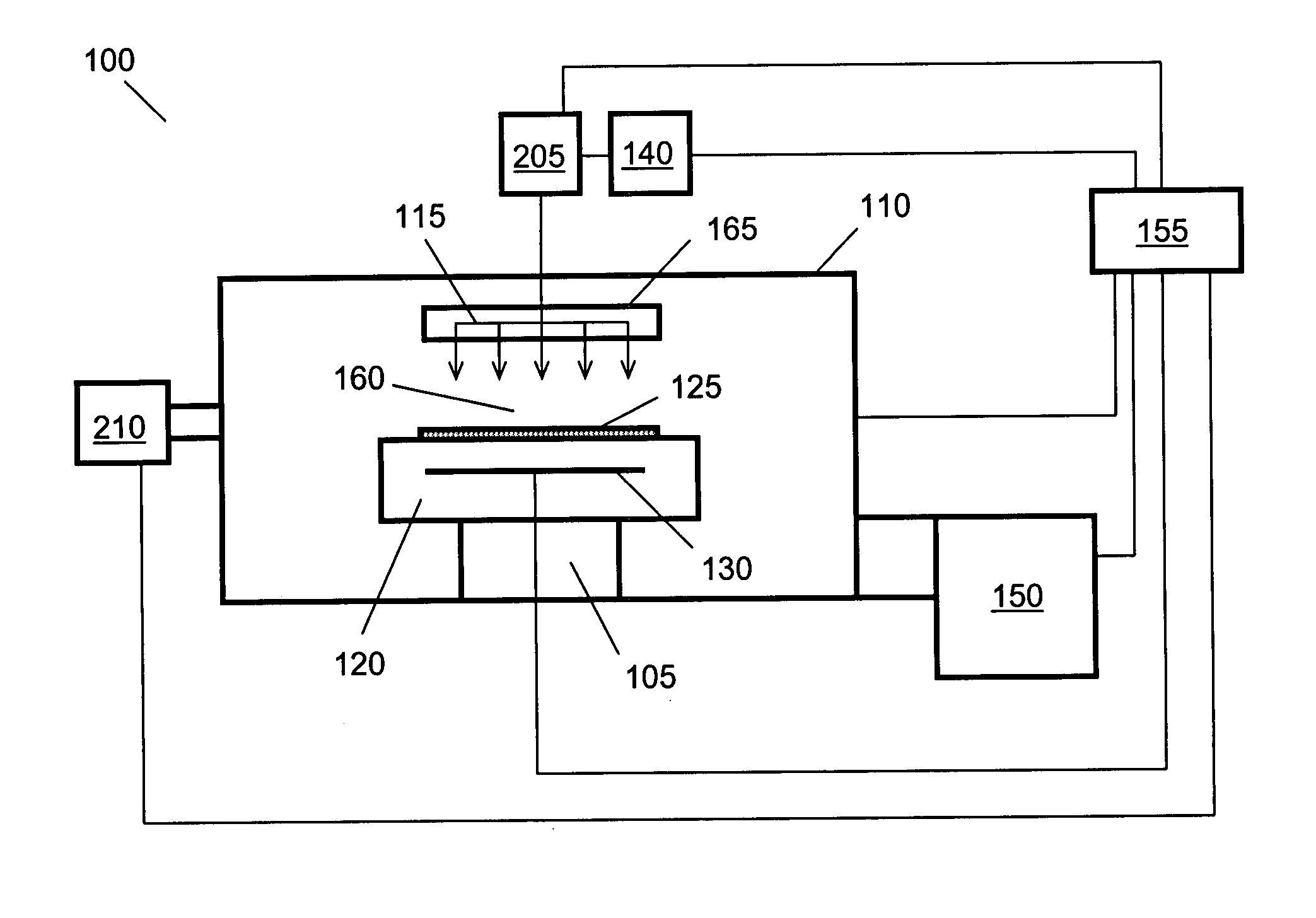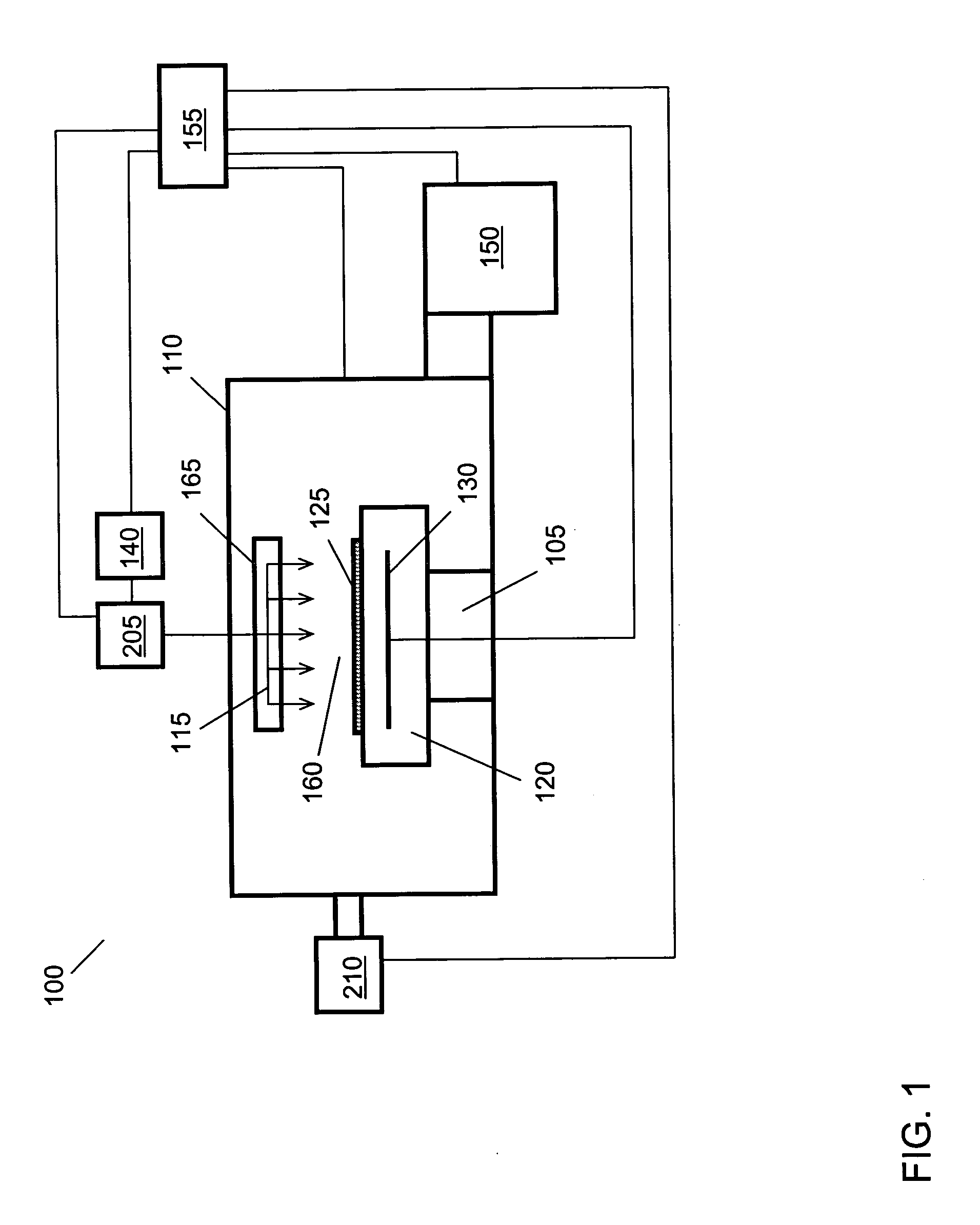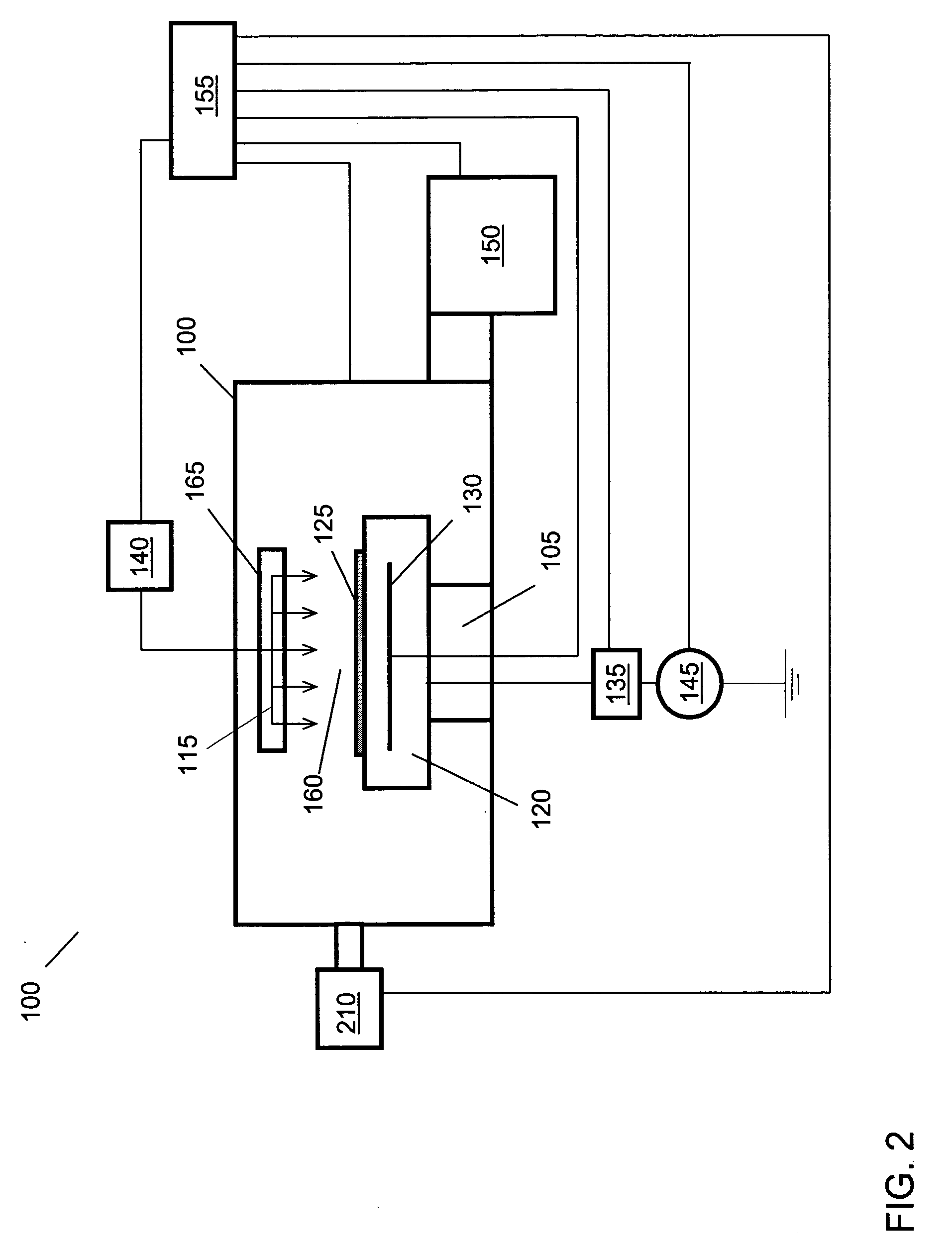Method of forming a metal layer
- Summary
- Abstract
- Description
- Claims
- Application Information
AI Technical Summary
Benefits of technology
Problems solved by technology
Method used
Image
Examples
Embodiment Construction
[0018]FIG. 1 shows a processing system 100 for processing a substrate according to an embodiment of the invention. The processing system 100 includes a process chamber 110 having a pedestal 105 for mounting a substrate holder 120 for supporting and heating / cooling a substrate 125, a gas injection system 140 for introducing a gas 115 to the process chamber 110, and a vacuum pumping system 150. The gas 115 can contain a pre-treatment gas that includes H2, N2, NH3, He, Ne, Ar, Kr, or Xe or a combination of two or more thereof, that forms excited species (e.g., radicals and ions) in a plasma for pre-treating the substrate 125, or a process gas containing a metal-carbonyl precursor for forming a metal layer on the pre-treated substrate 125 in a chemical vapor deposition process. The gas injection system 140 allows independent control over the delivery of the gas 115 to the process chamber 110 from ex-situ gas sources (not shown). The gas 115 can be introduced into the process chamber 110...
PUM
| Property | Measurement | Unit |
|---|---|---|
| Temperature | aaaaa | aaaaa |
| Temperature | aaaaa | aaaaa |
| Temperature | aaaaa | aaaaa |
Abstract
Description
Claims
Application Information
 Login to View More
Login to View More - R&D
- Intellectual Property
- Life Sciences
- Materials
- Tech Scout
- Unparalleled Data Quality
- Higher Quality Content
- 60% Fewer Hallucinations
Browse by: Latest US Patents, China's latest patents, Technical Efficacy Thesaurus, Application Domain, Technology Topic, Popular Technical Reports.
© 2025 PatSnap. All rights reserved.Legal|Privacy policy|Modern Slavery Act Transparency Statement|Sitemap|About US| Contact US: help@patsnap.com



